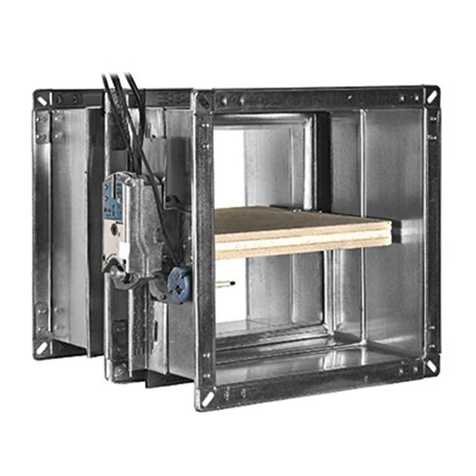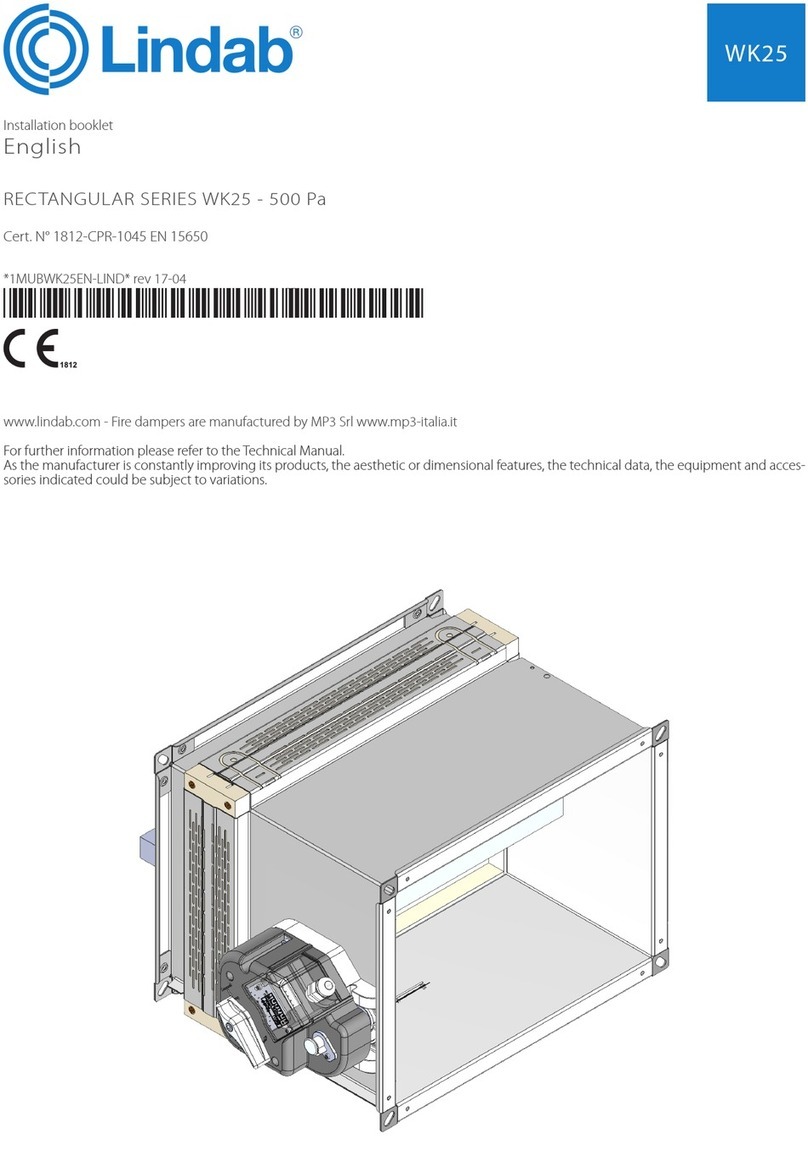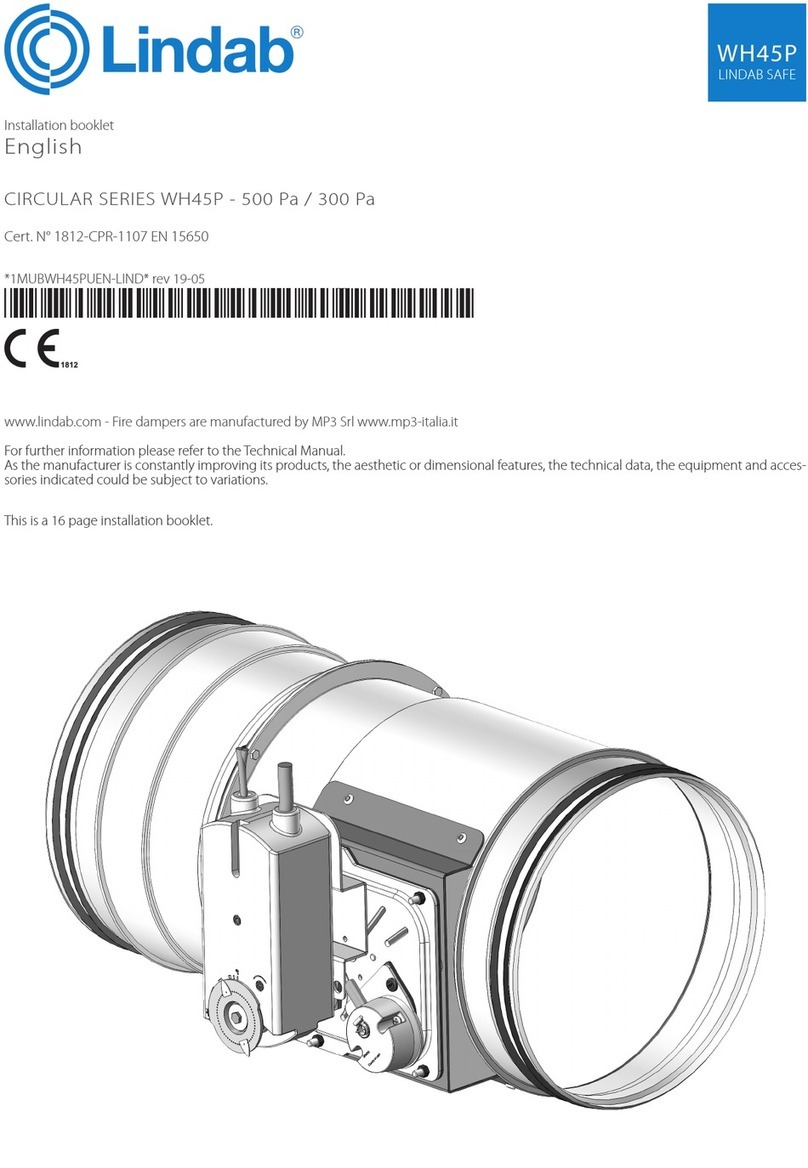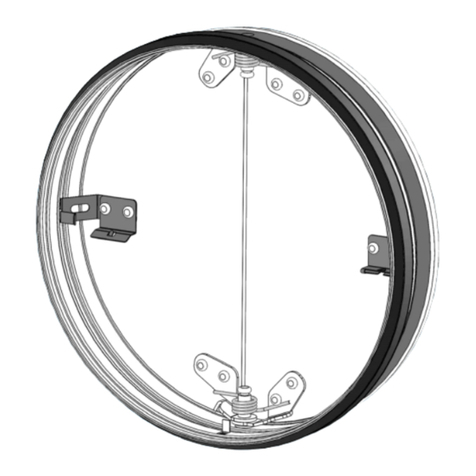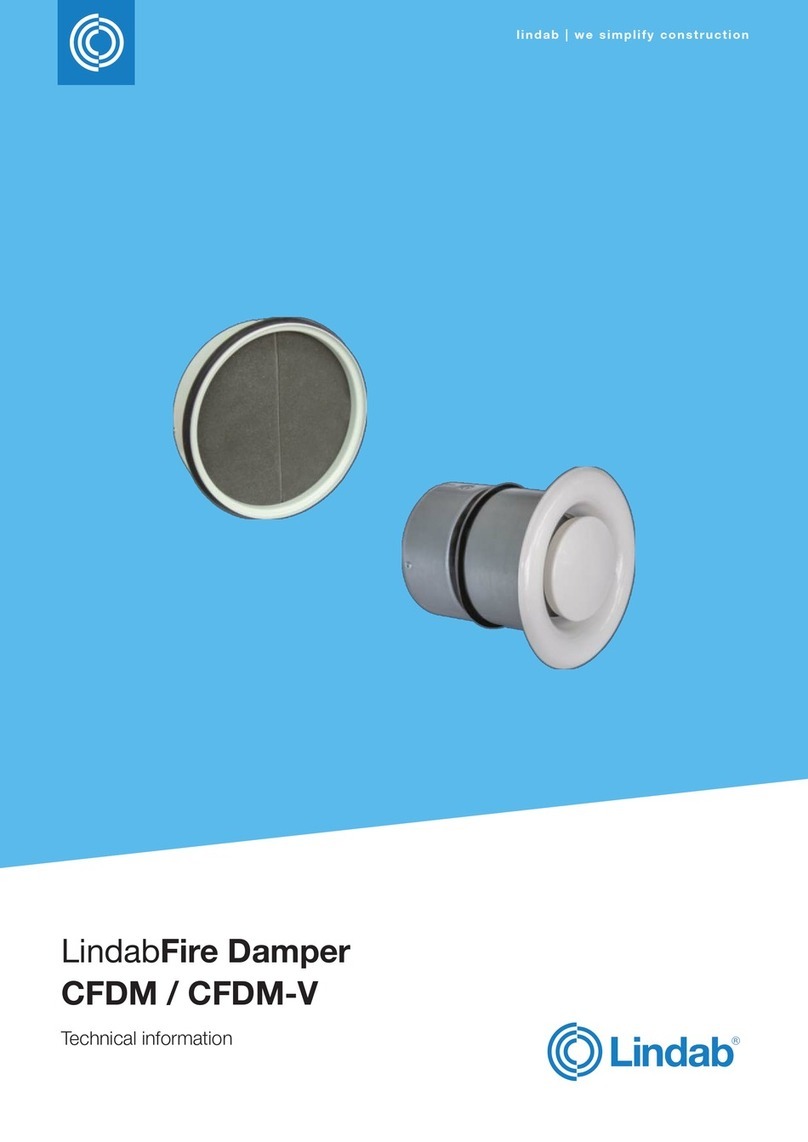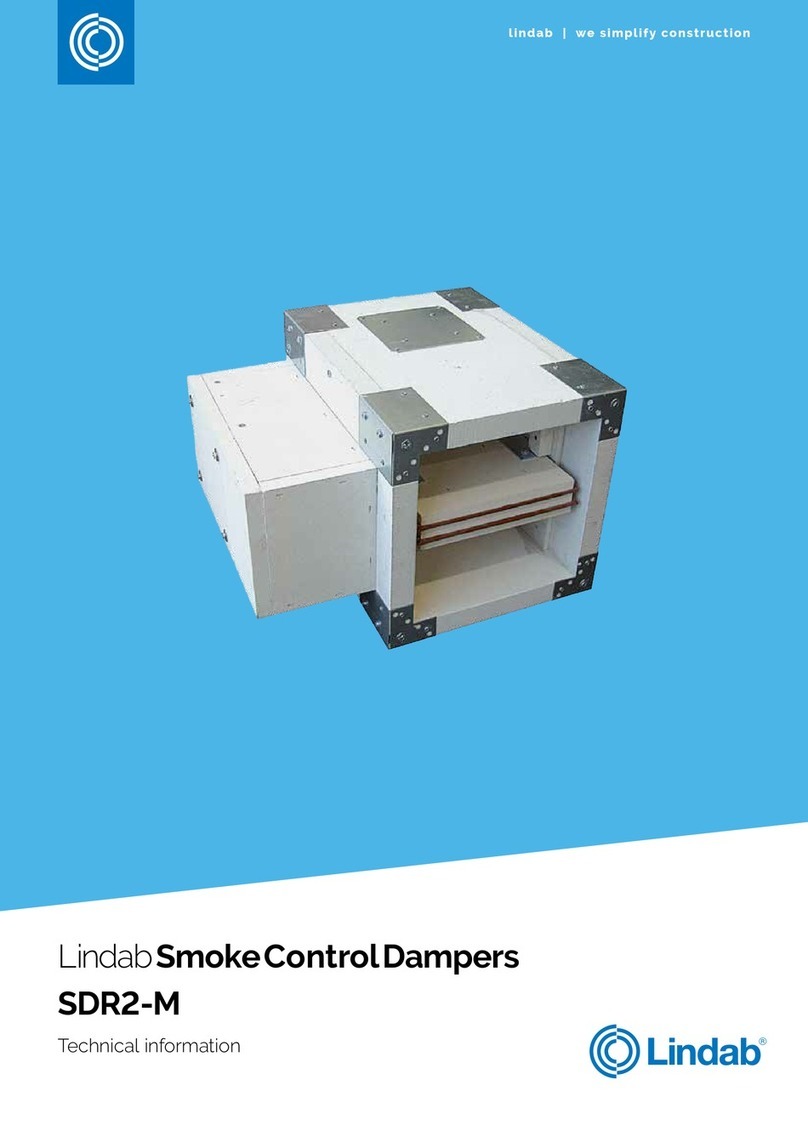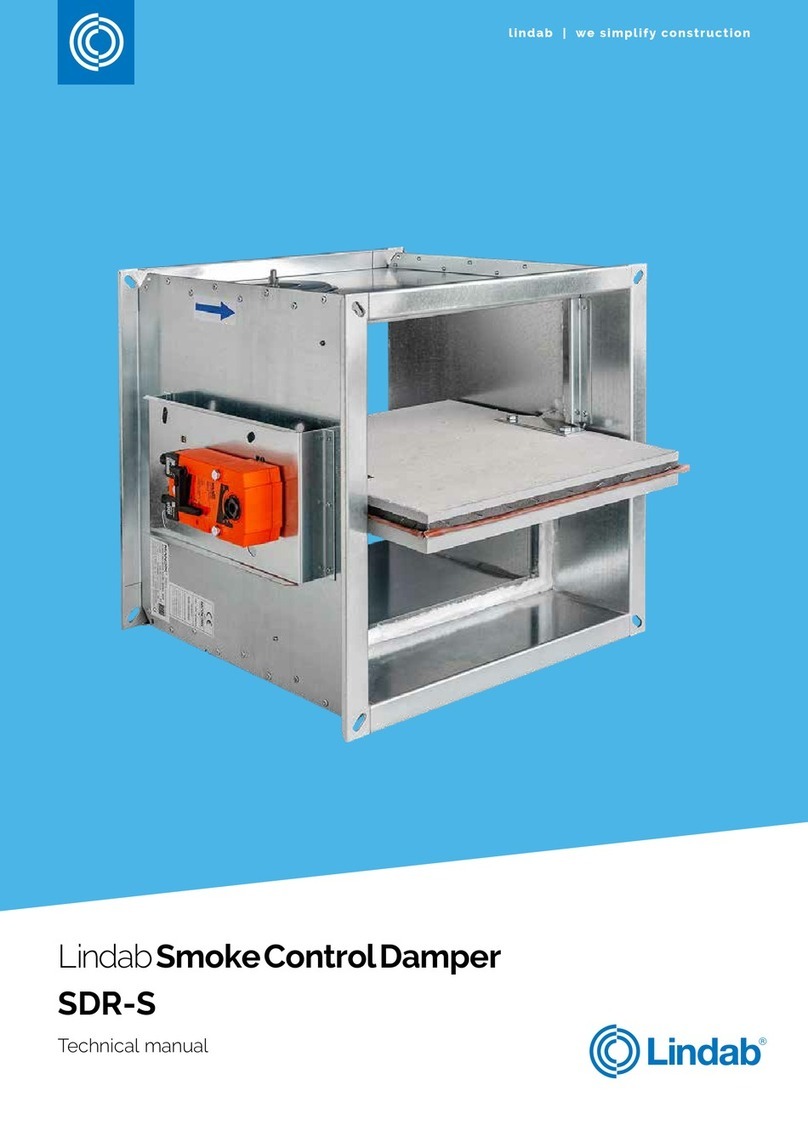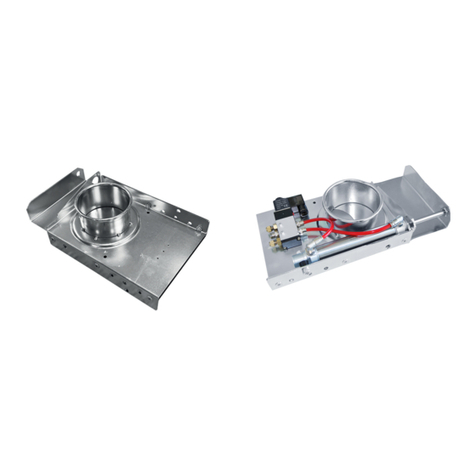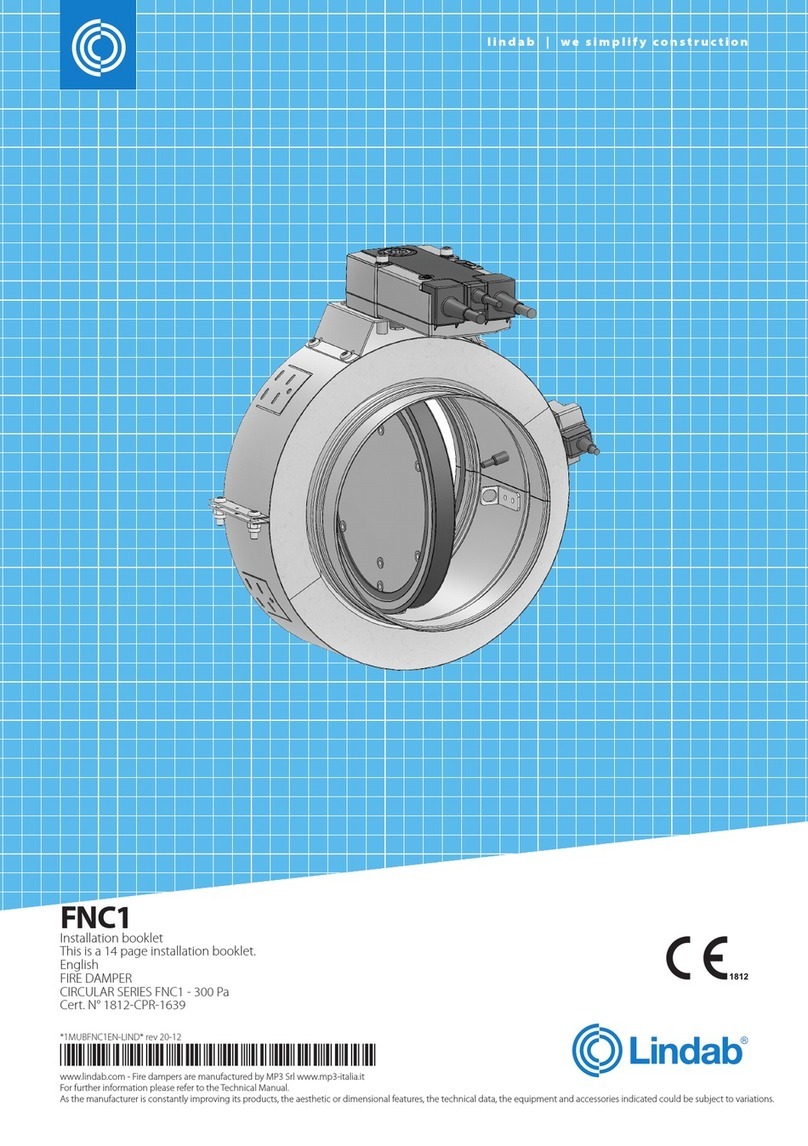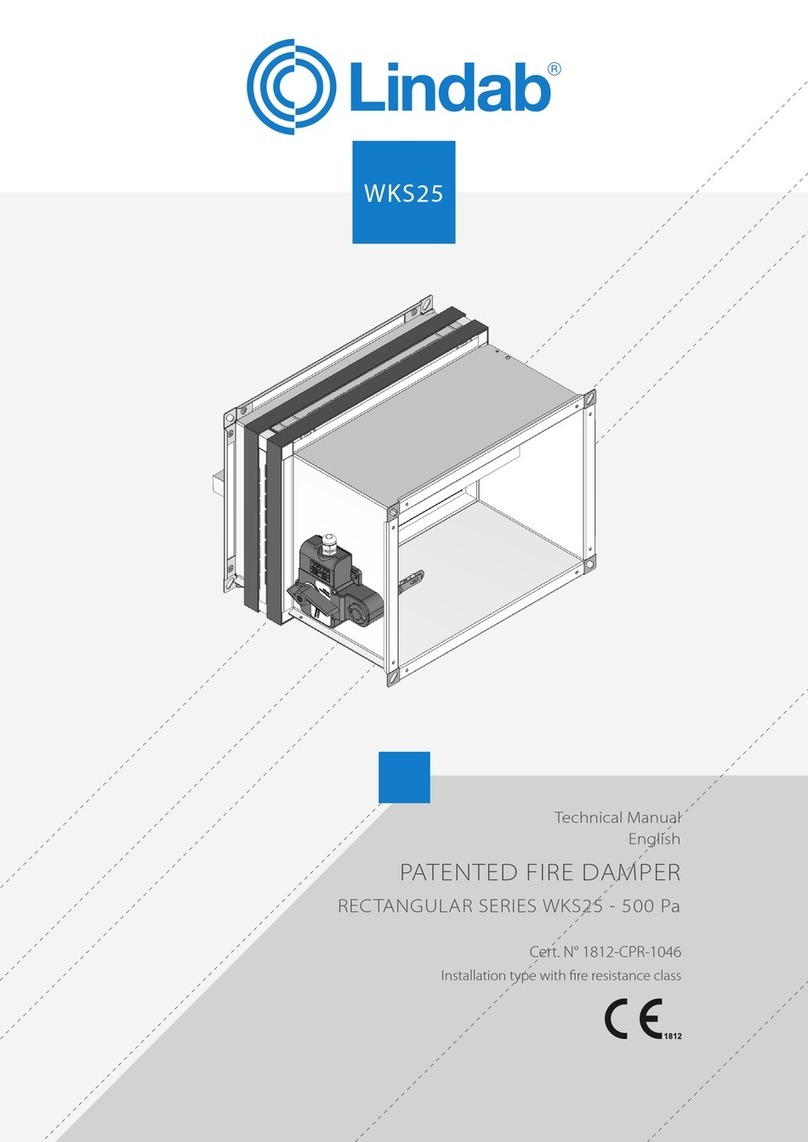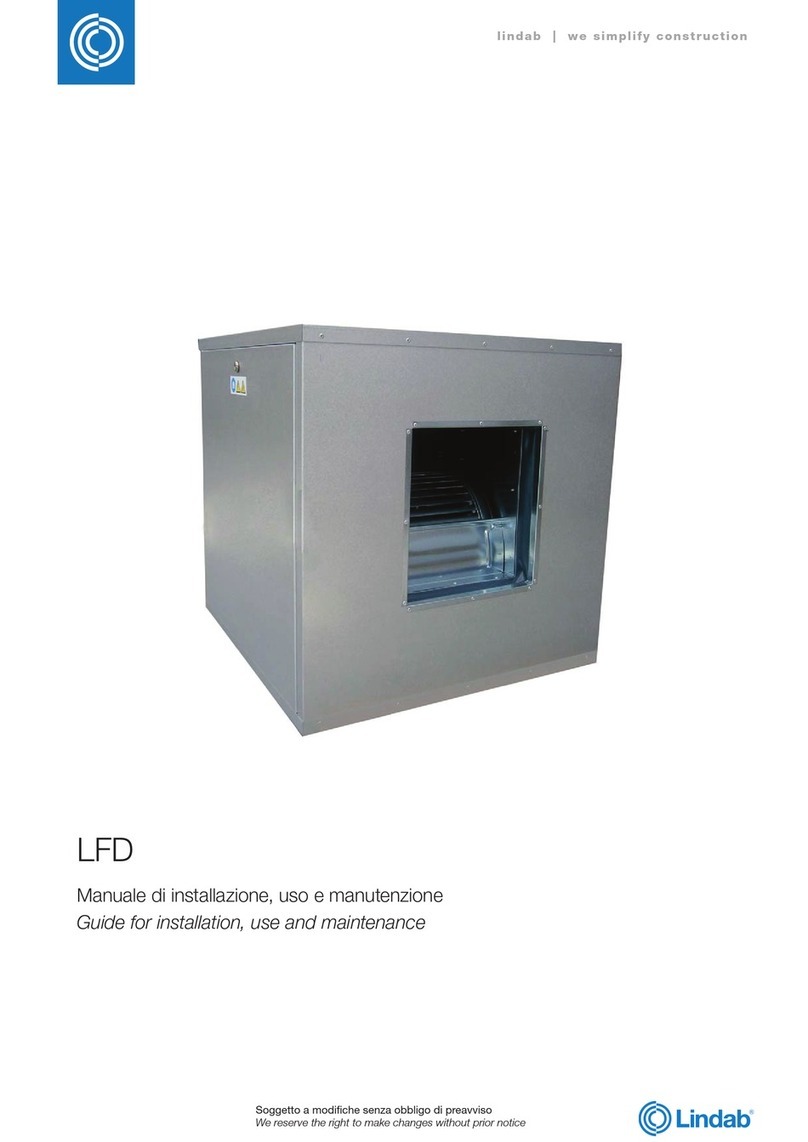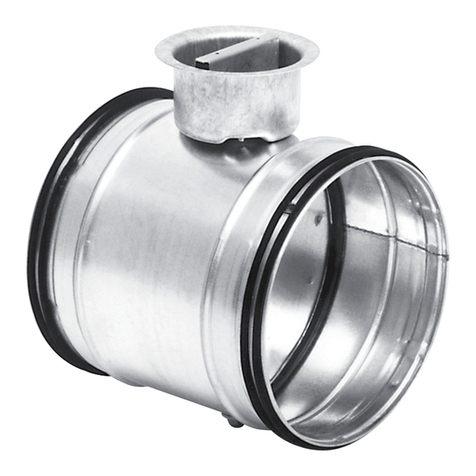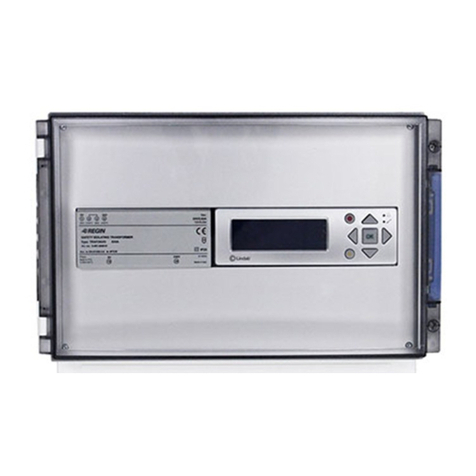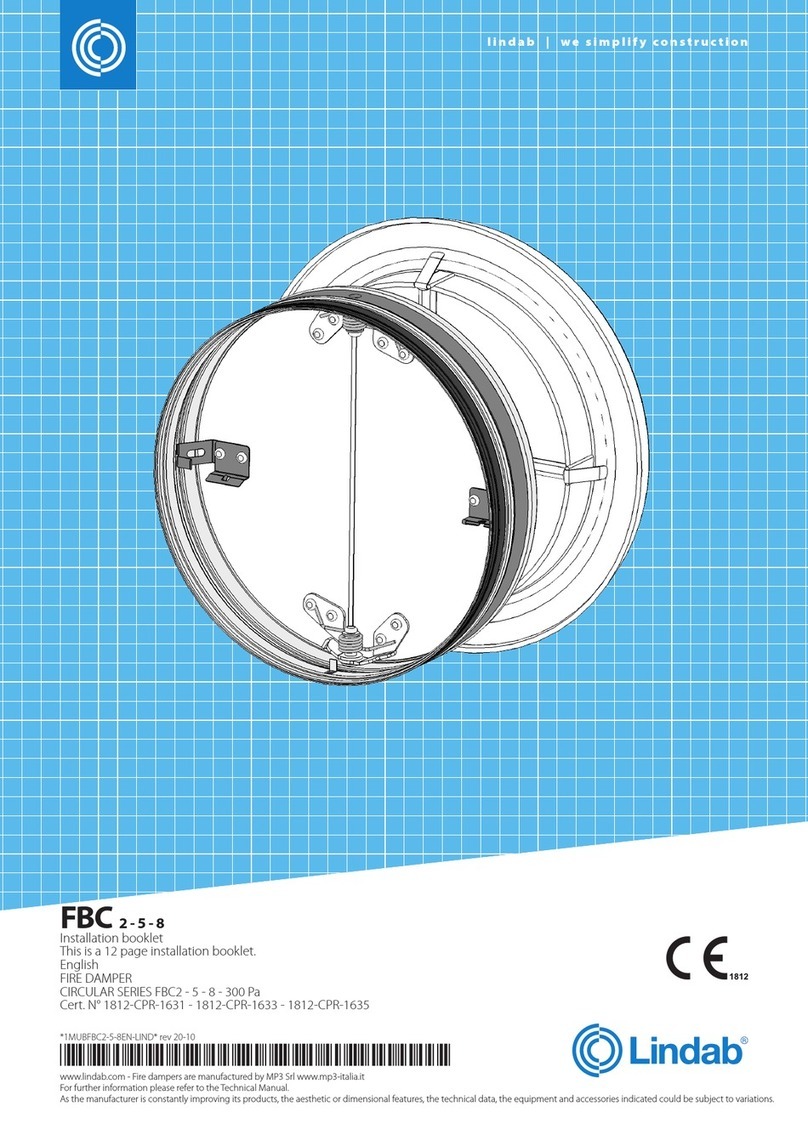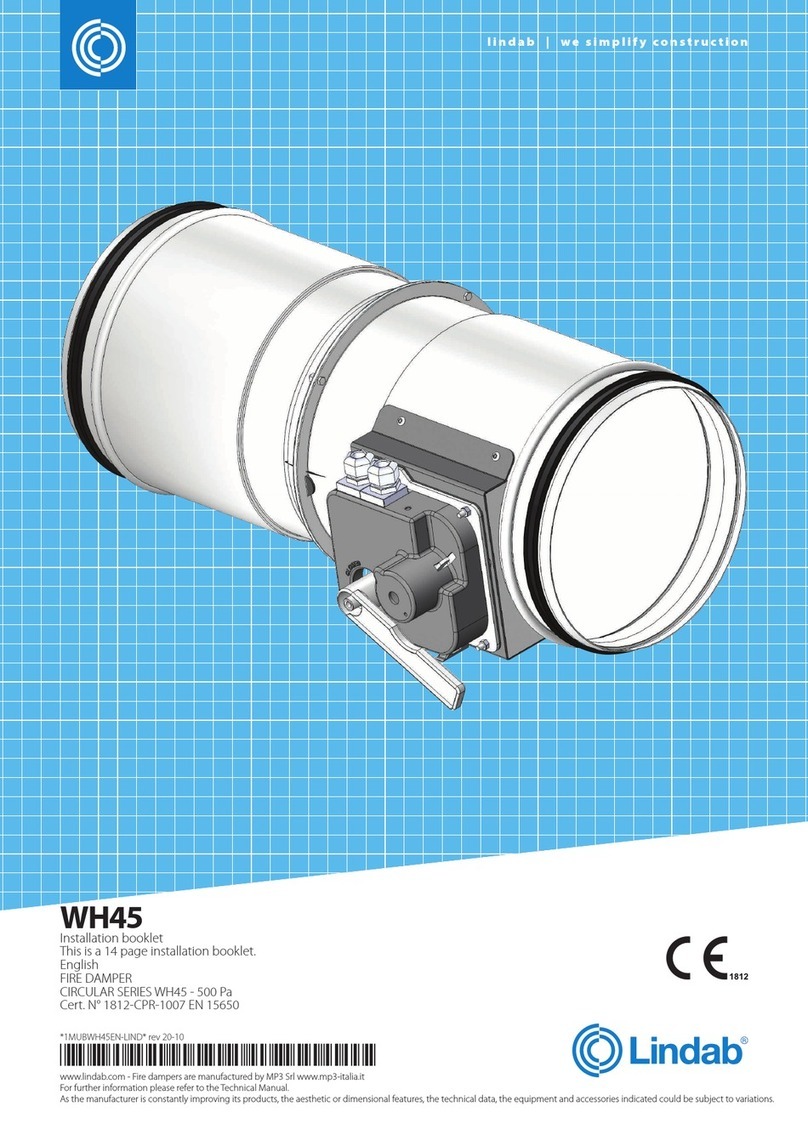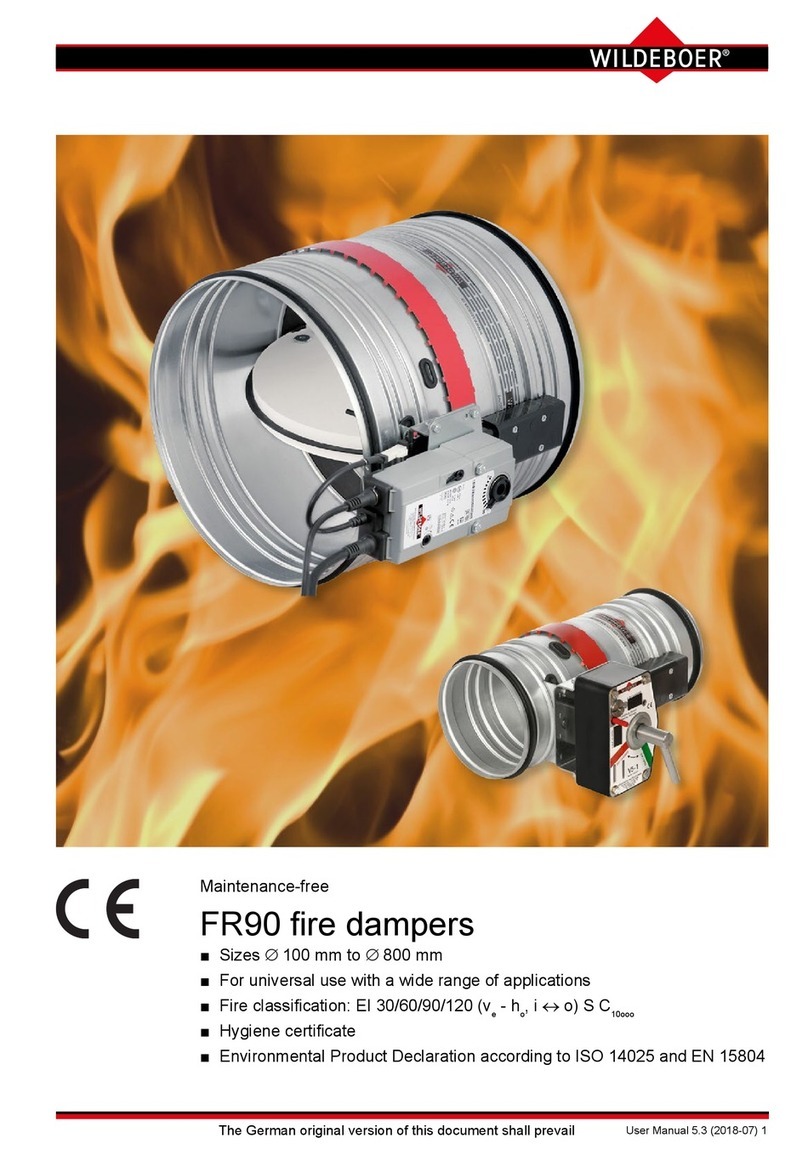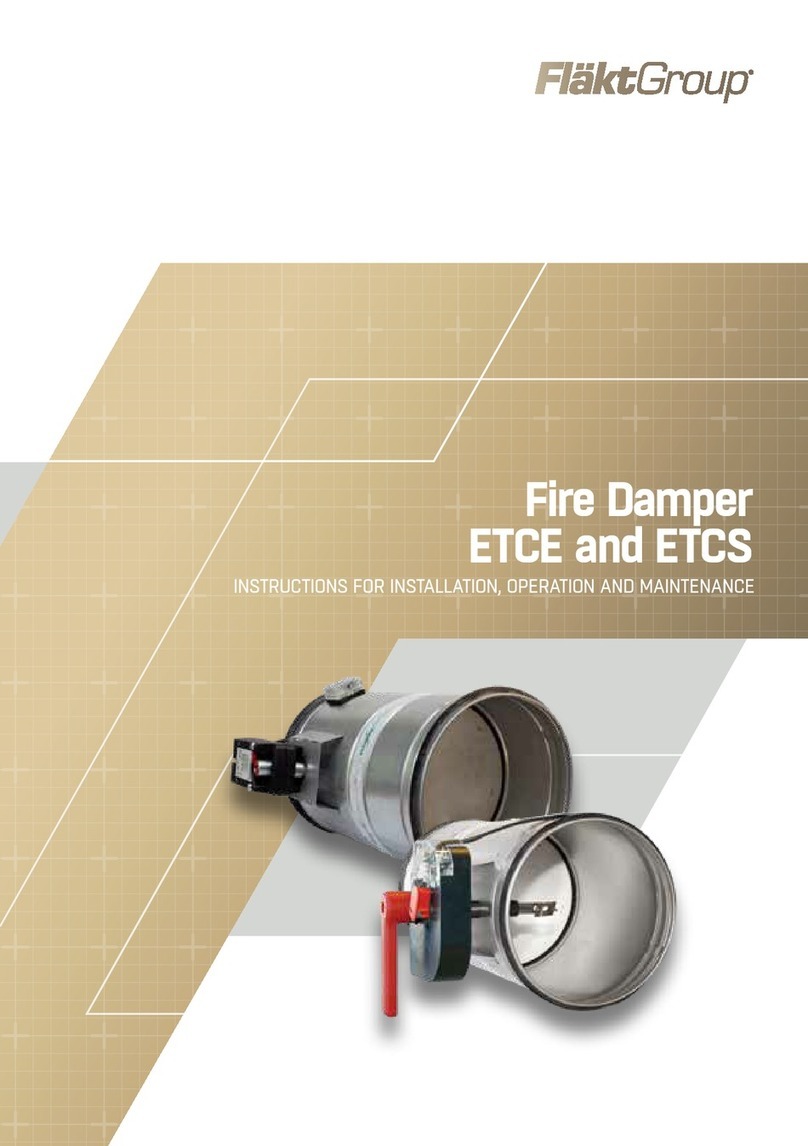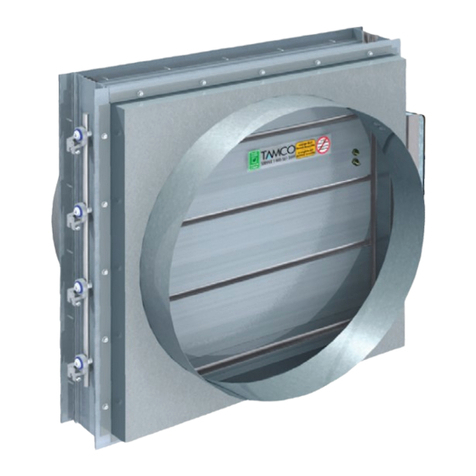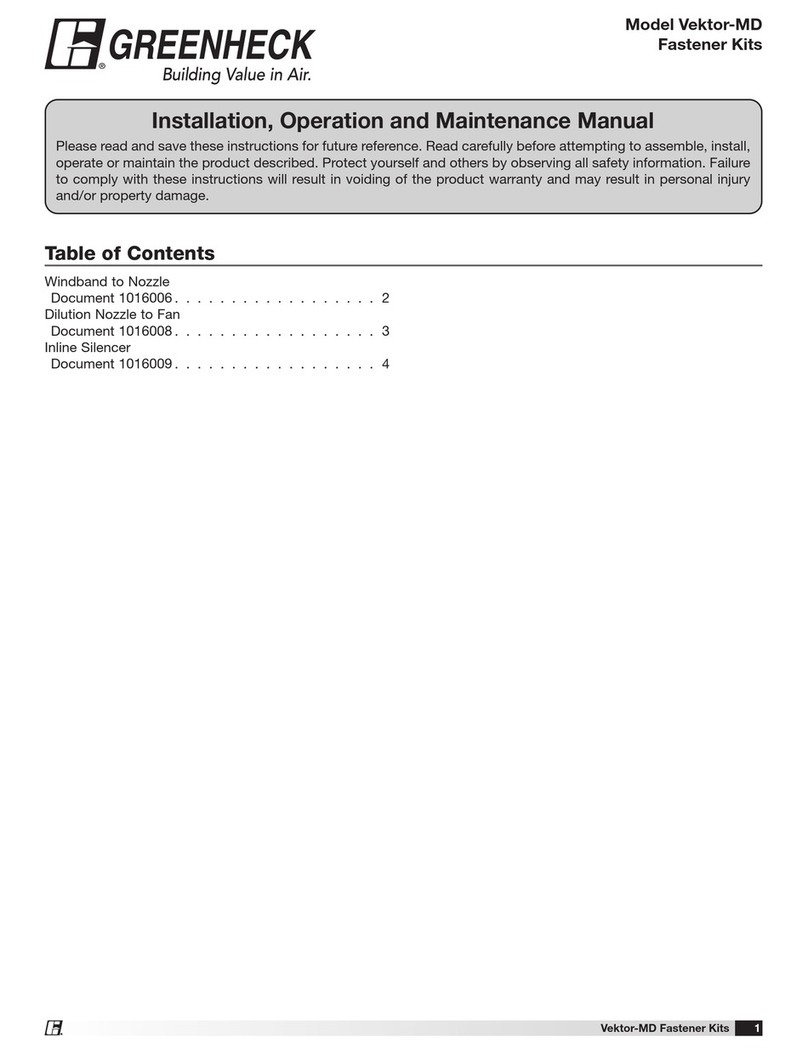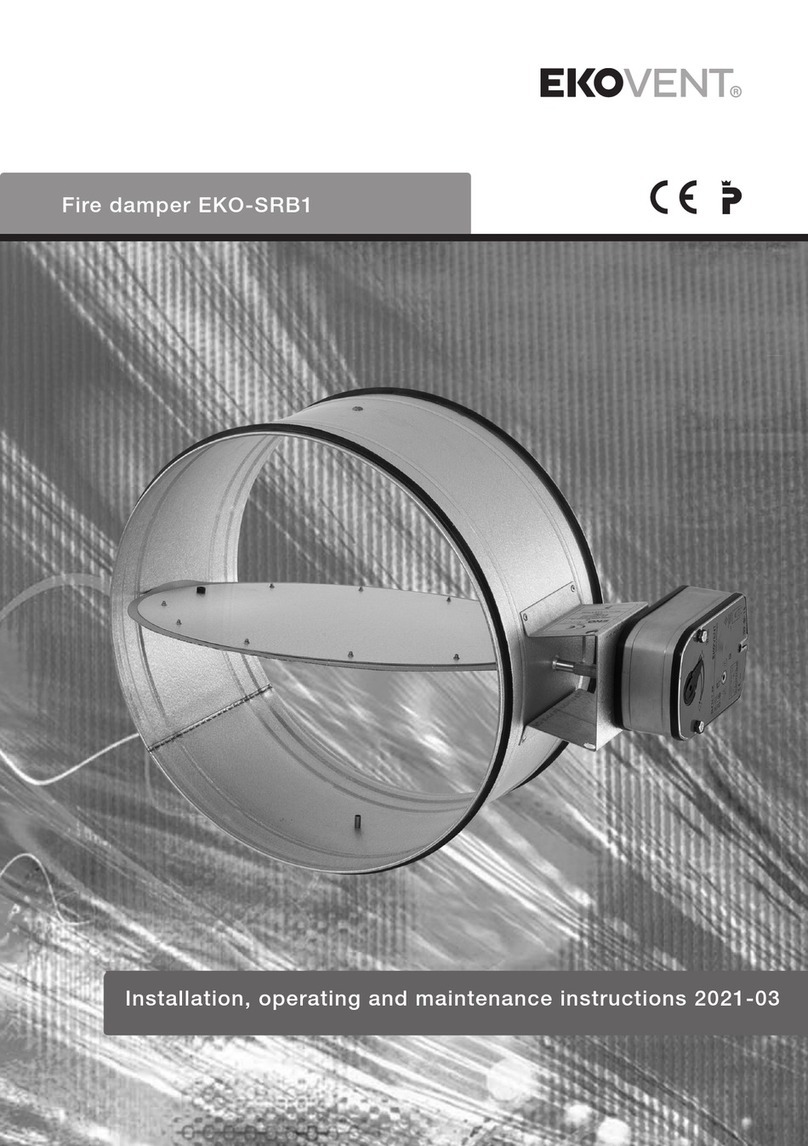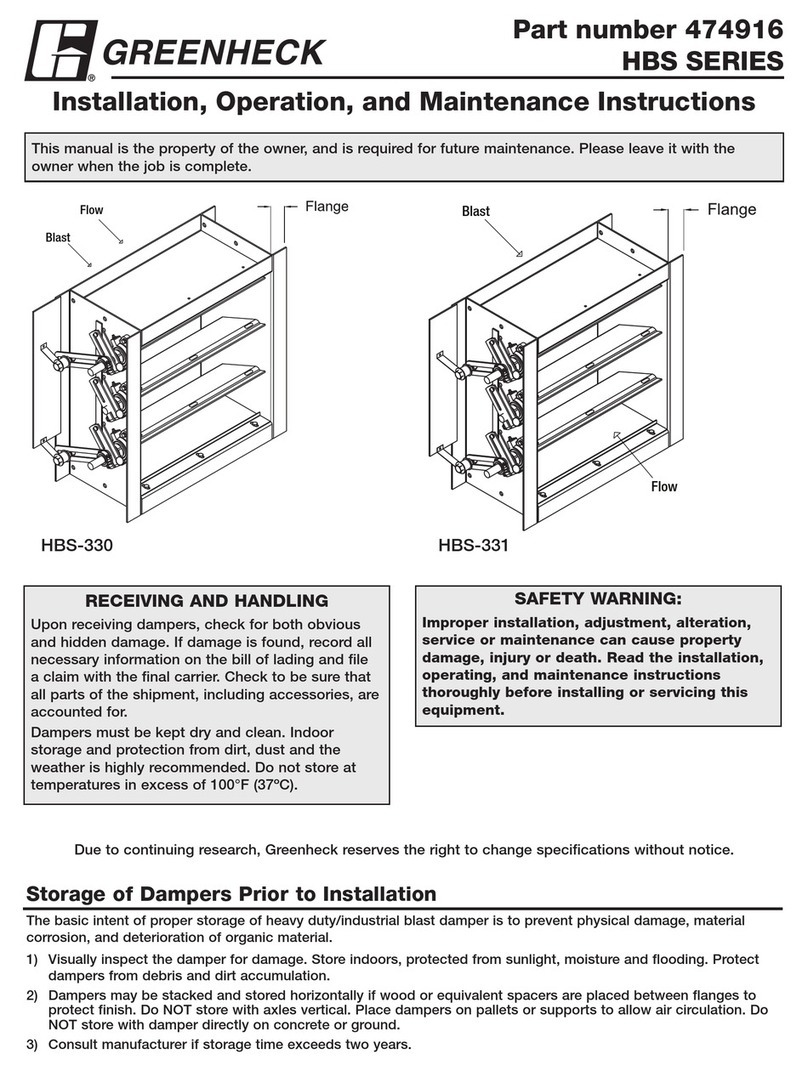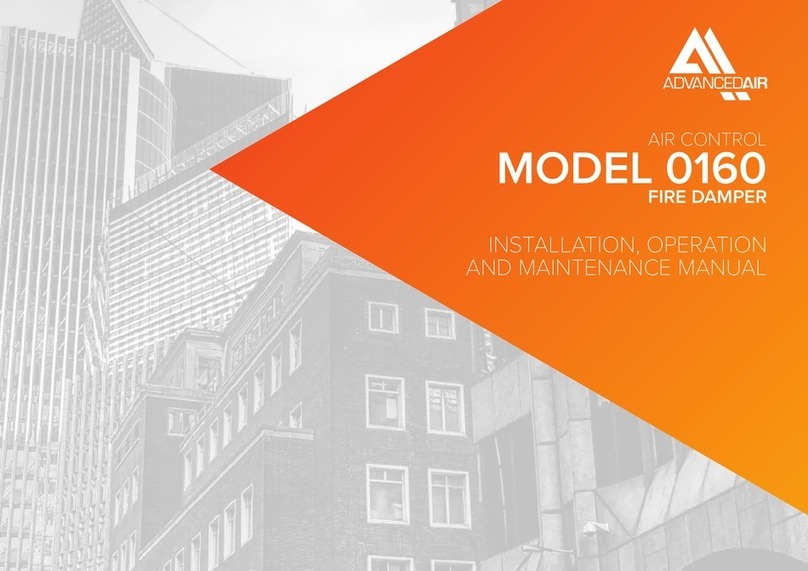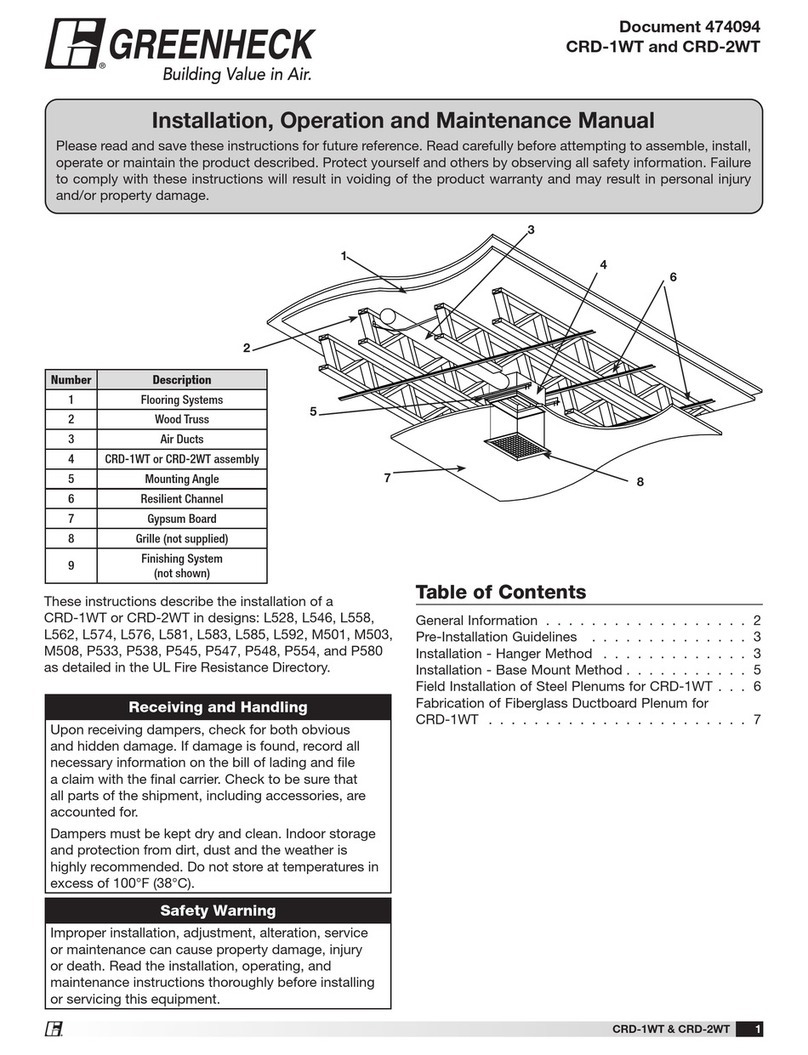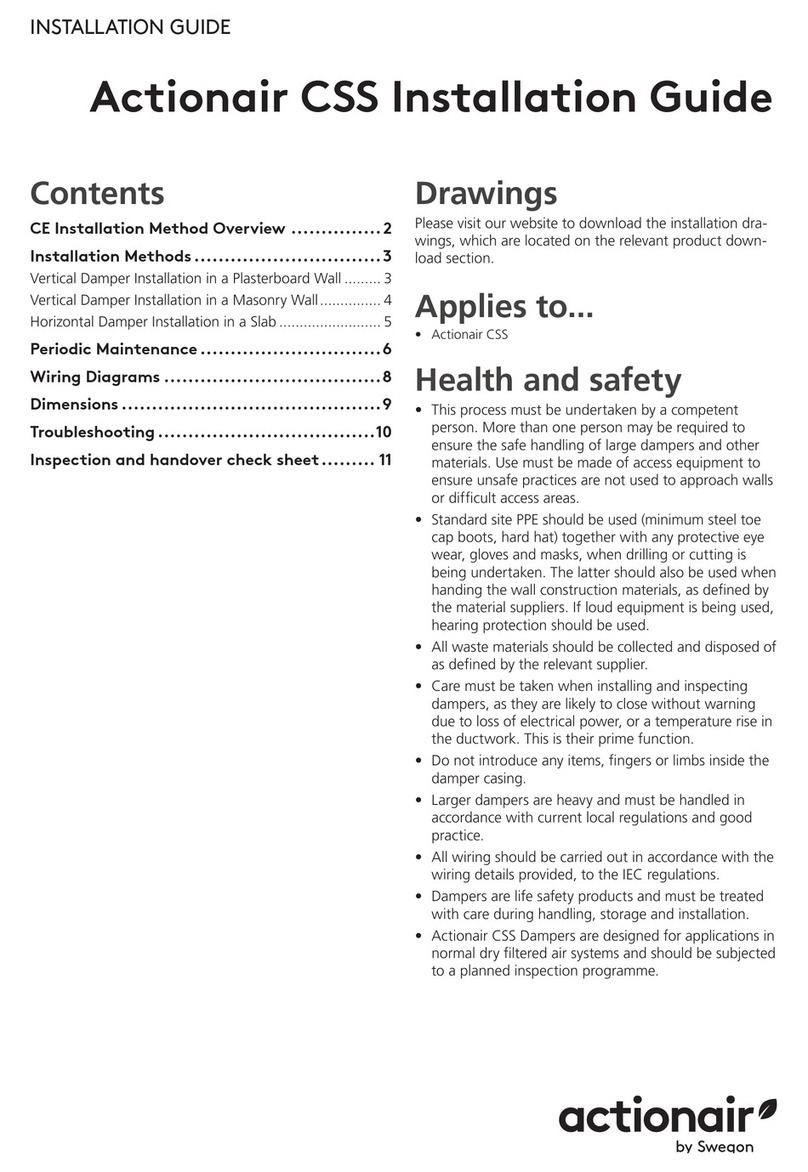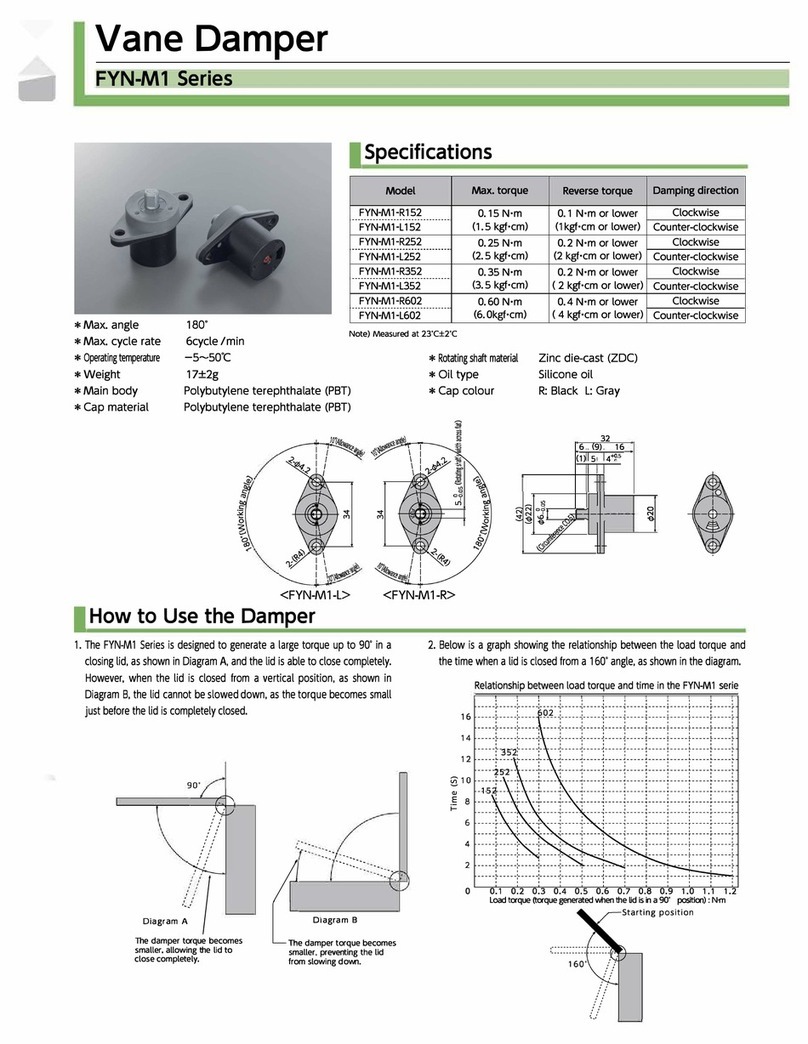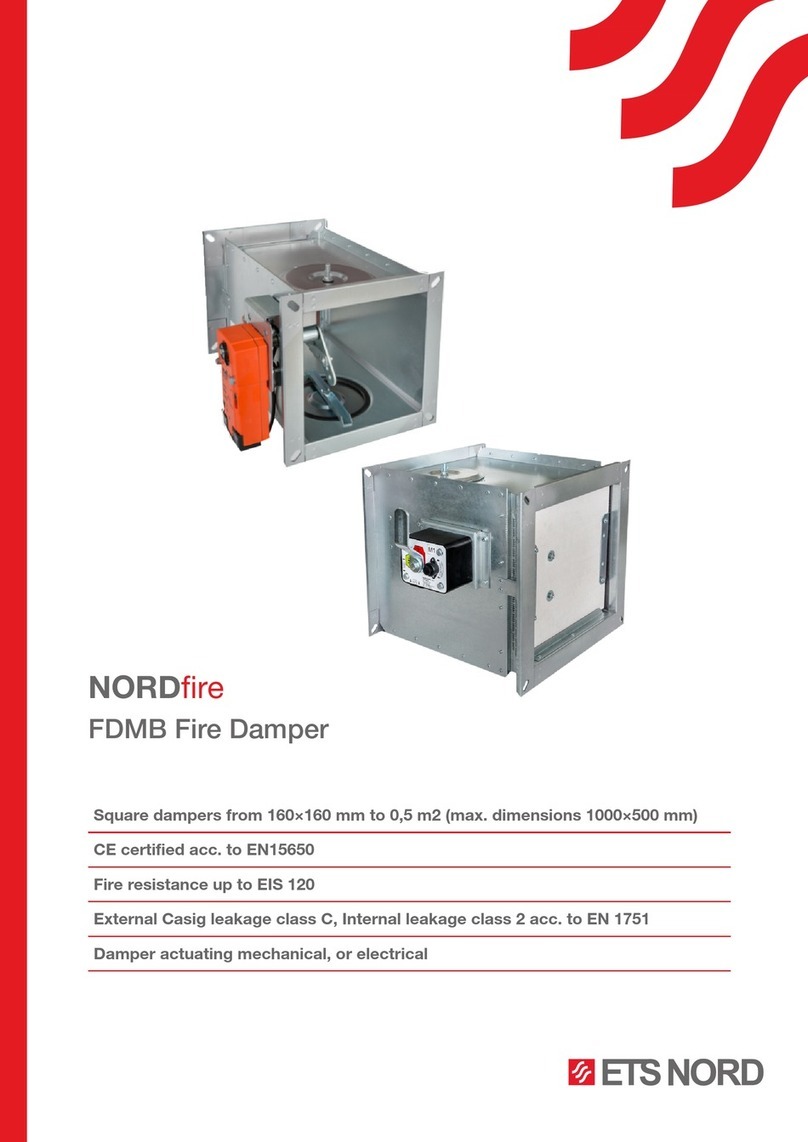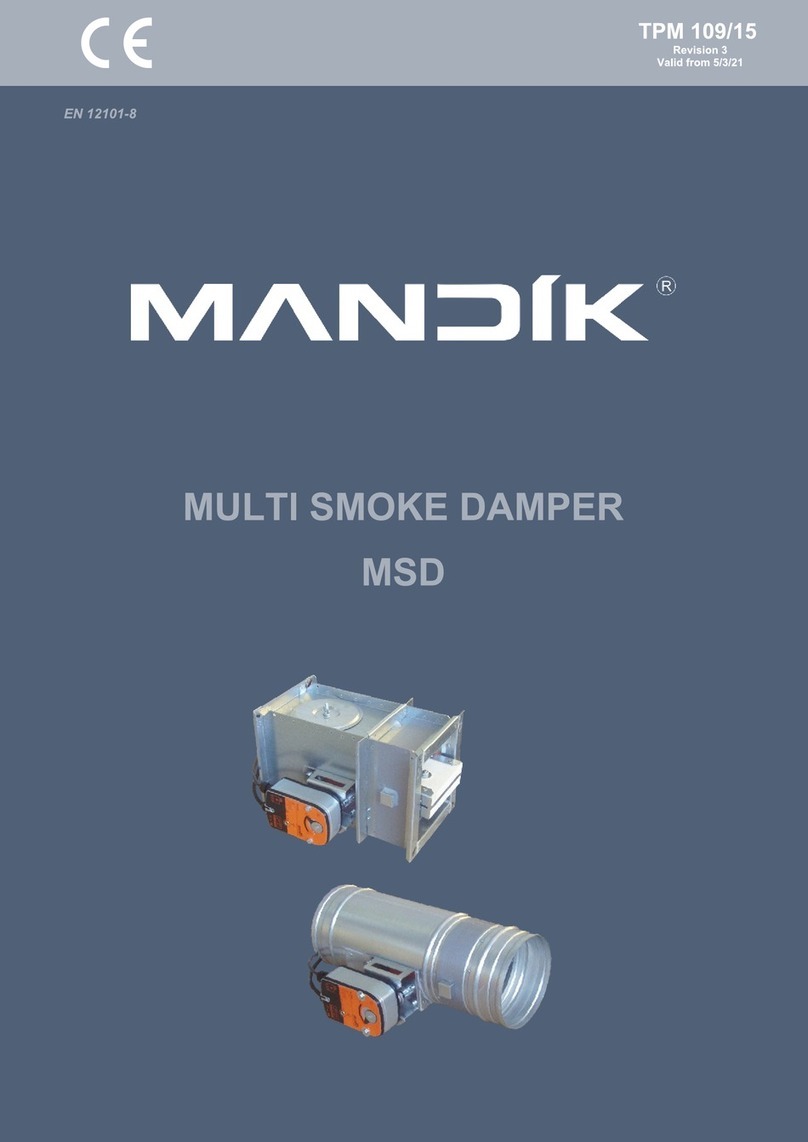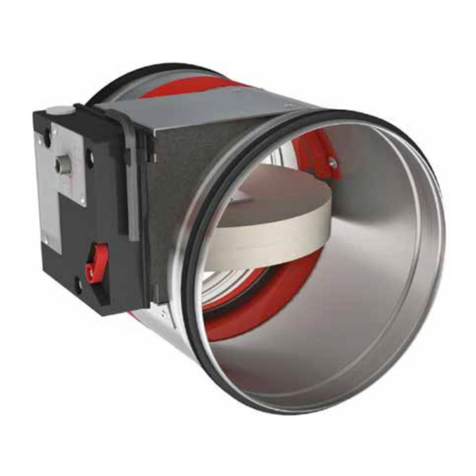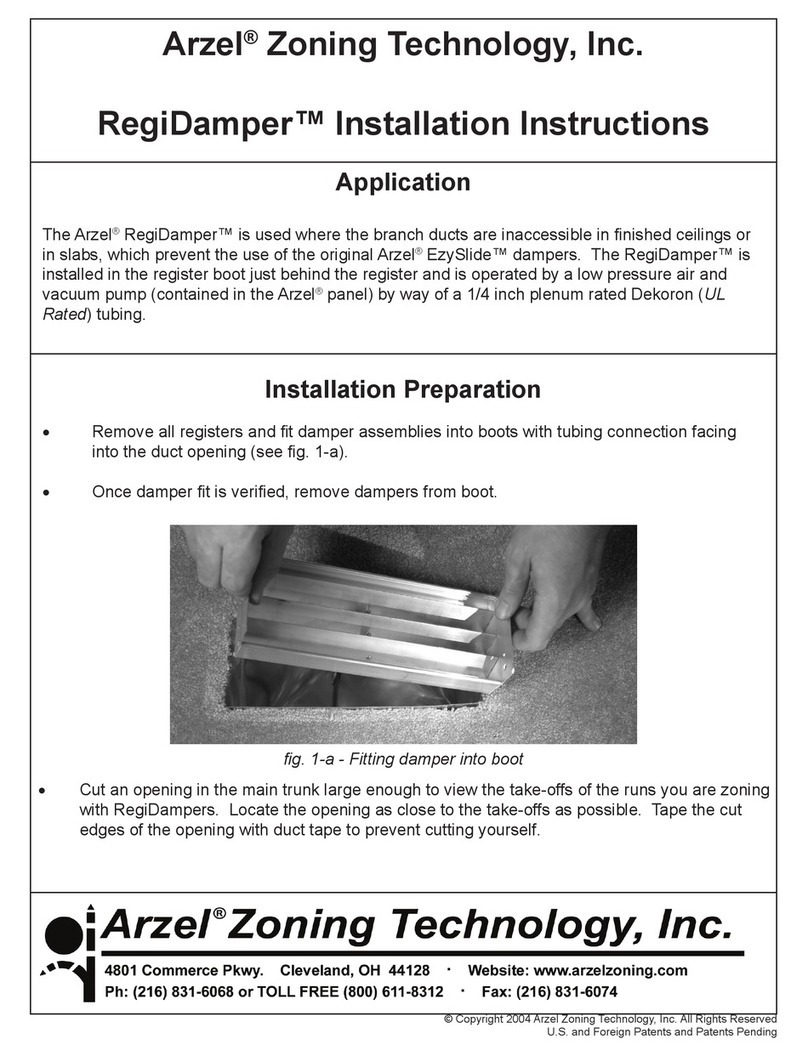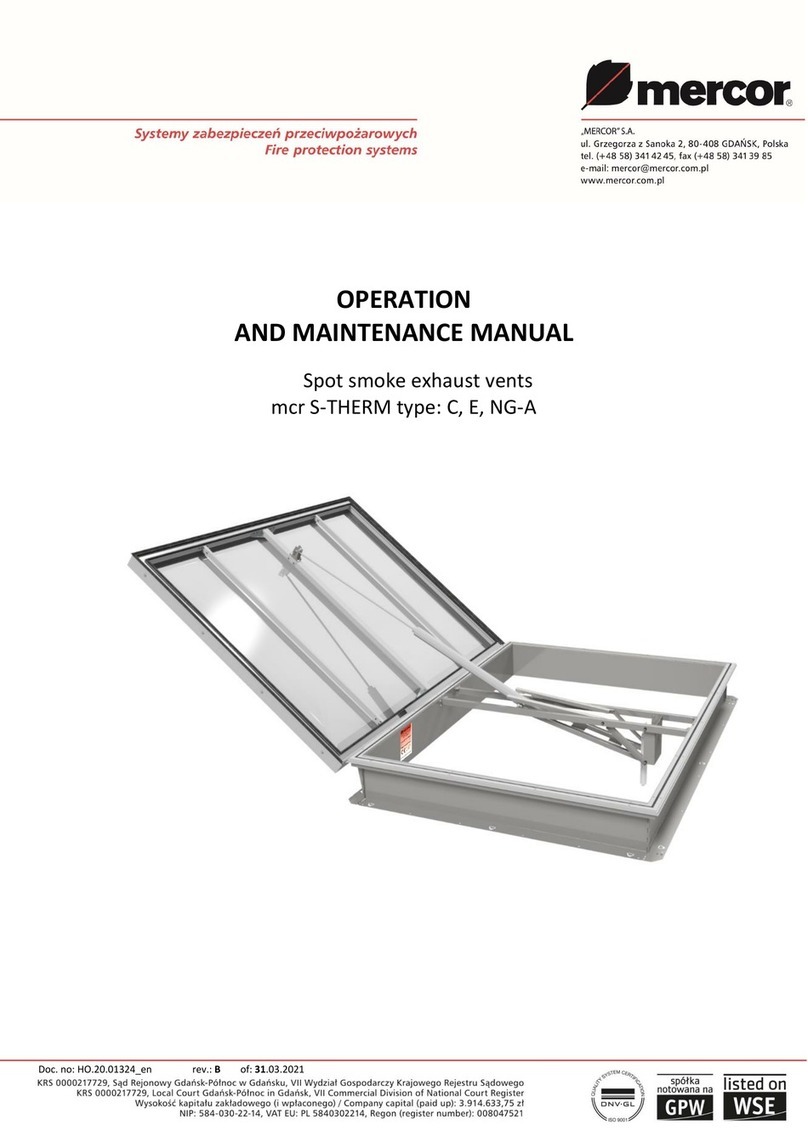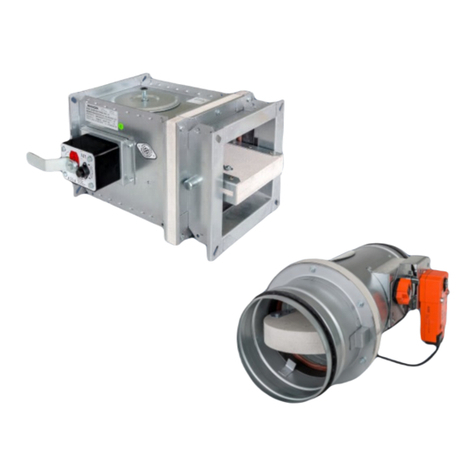
10/16
Fire Batt (Weichschott) sealings
Fire dampers installed within vertical wall Fire dampers installed within oor
Installation a [mm] b [mm] c [mm] d [mm]
Rigid
wall
EI 120 S Installation within vertical rigid wall with Fire Batt
(Weichschott) sealing
Rock wool 140 kg/m³ and endothermic varnish sealing 200 75 - -
Flexible wall
EI 120 S Installation within vertical light wall (plasterboard) with
Fire Batt (Weichschott) sealing
Rock wool 140 kg/m³ and endothermic varnish sealing 200 75 - -
EI 120 S Installation within vertical light wall (gypsum blocks wall)
with Fire Batt (Weichschott) sealing
Rock wool 140 kg/m³ and endothermic varnish sealing 200 75 - -
Floor
EI 90 S Installation within oor and Fire Batt (Weichschott) sealing
Rock wool 140 kg/m³ and endothermic varnish sealing - - 200 75
Installations within vertical light wall (Shaft wall)
Fire dampers installed within vertical wall Fire dampers installed within oor
Installation a [mm] b [mm] c [mm] d [mm]
Flexible
wall
EI 90 S Installation within vertical light wall (Shaft wall) 200 75 - -
Construction supports characteristics
The European standard for re dampers foresees a precise correlation
between the wall/oor characteristics and the re resistance class
obtained, as well as the correlation between wall/oor used for the
test and wall/oor used for the actual installation.
The test results obtained on a type of wall/oor are valid also for
walls/oor of the same type but with greater thickness and/or densi-
ty than those used in the test.
For plasterboard walls, the test results are also valid for walls with a
greater number of plasterboard layers on each side.
As a result, the indicated thickness and density characteristics are to
be considered as minimum values.
The wall/oor in which the re dampers are installed must be re
class certied according to the standards foreseen for the structure.
Rigid walls
Can be made with aerated concrete blocks, poured concrete, con-
crete panels, perforated cell elements in concrete or brick in accord-
ance with the following characteristics:
• minimum thickness 100 mm;
• minimum density 550 kg/m³.
The use of a reinforcing beam above the opening is recommended
for walls made from concrete blocks, bricks or in concrete cell ele-
ments.
For walls built with perforated elements, it is also recommended that
the area of the opening be made from full elements (for example
aerated concrete blocks) to guarantee the correct adhesion of the
mortar.
1. Reinforcing beam
Light plasterboard vertical walls
During testing, light plasterboard walls have been used with the fol-
lowing characteristics:
• U-shaped horizontal metal frame (50 mm) and C-shaped vertical
frame (49 mm) made from 0,6 mm thick sheet metal;
• Vertical proles placed with a maximum spacing of 1000 mm be-
tween each other (625 mm only for installations with Weich-
schott sealing);
• Filling made of rock wool with density up to 80 kg/m³ (optional);
• Each side is made from two plasterboard layers 12,5 mm thick, un-
alinged to avoid alignment between the joints of the layer above
and below.
The following indications are given for the installation walls:
• metal proles minimum width: 49 mm;
• metal proles minimum thickness: 0,6 mm;
• Vertical proles placed with a maximum spacing of 1000 mm be-
tween each other (625 mm only for installations with Weich-
schott sealing);
• vertical prole xing with selfthreading screws or by clinching to
the bottom horizontal prole and insertion in the top horizontal
prole;
• proles xed using self-threading screws or by clinching on every
intersection.
• installation of a frame around the damper with base and height
where shown in the installation instructions;
• Filling made of rock wool with density up to 80 kg/m³ (optional);
• each side is made from two plasterboard layers 12,5 mm minu-
mum thick, unalinged to avoid alignment between the joints of
the layer above and below.
• the front plasterboards layers are xed using long enough screws
to pass through the lower plasterboard and attach to the steel pro-
le underneath.

